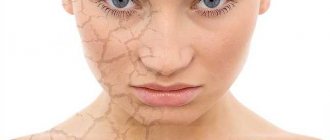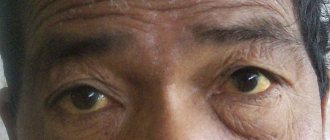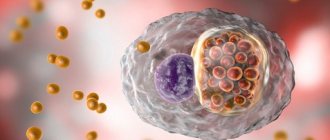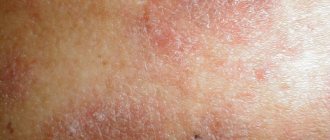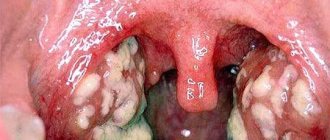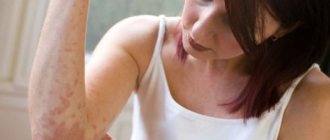Introduction
Athlete's foot is an infectious disease caused by soil fungi (saprophytes).
It has a wide geographical distribution and affects absolutely all segments of the population, but certain groups of people suffer from this type of fungal infection more often than others. Thus, workers in hot shops, athletes, miners and other people with similar professions account for 60 to 80 percent of cases of the disease. At the same time, in cities, the population suffers from epidermophytosis much more often than in rural areas, and children get sick much less often than adults.
Epidemiology
The wide variety of clinical manifestations of epidermophytosis, the duration of the course, the frequency of relapses, the presence of erased forms, latent infection and carriage are the most significant epidemiological factors. The abundance of fungi in the falling scales, their high viability and germination on a variety of objects contaminated with organic substances contributes to a wider spread of epidermophytosis.
The source of infection is a sick person and a carrier of epidermophytons. Transmission occurs through direct contact, as well as through various infected things: underwear, shoes, sports items. Baths, swimming pools, swimming schools and showers in large cities are often places where athlete's foot is infected. Floors, utensils, benches and especially wastewater from baths, without sufficiently systematic and effective disinfection, are most significant in the spread of this disease.
Causes of athlete's foot
The causative agents of the infection are saprophytic fungi , which become pathogenic under certain conditions. Among the factors contributing to this transformation, experts include:
- shift to the alkaline side of the “pH” of human sweat;
- increased sweating of the extremities;
- uncomfortable shoes;
- chafing of the skin and diaper rash on the legs;
- flat feet.
In addition to these nuances, the general condition of the human body plays a very important role. Often the development of the disease is facilitated by:
- lack of various vitamins;
- diseases of the endocrine and nervous system;
- vascular diseases;
- low activity of the body's immune system
You should also know that sometimes the occurrence of athlete's foot is influenced by meteorological conditions, for example, high humidity or temperature.
The disease in question is extremely contagious (contagious). Fungal spores and mycelium threads are concentrated in the stratum corneum of the epidermis, and when released in large quantities outside (into the environment), they form an epidemiological situation unfavorable for the body. Thus, it is very easy to catch the disease, especially in indoor and outdoor swimming pools, on the beach, in public places where common basins, benches, sun loungers, bedding and other similar items are used.
General concept of the pathogen
Let's look at what athlete's foot is. This disease is a form of fungal disease, or rather external (epidermal) candidiasis. Caused by the fungus Trichophyton interdigitalis, a representative of the opportunistic flora for humans.
In addition to this pathogen, epidermal candidiasis can be caused by fungi of the following types:
- Candida;
- Pennicillins;
- Aspargyl.
This happens only in cases of severe suppression of the immune system (with severe chronic diseases, pathology of the immune system, taking immunosuppressants).
Athlete's foot is a very common disease. The fact is that most often it is carried by carriers, that is, people who do not have any symptoms of the disease.
Since fungal diseases are very contagious, they are quickly transmitted from person to person through household factors:
- public showers;
- baths;
- working locker rooms;
- dormitories, boarding schools, barracks.
The vast majority of fungi, including the causative agent of athlete's foot, are opportunistic microorganisms, that is, under normal conditions they are not capable of causing disease in humans. In order for these microorganisms, which are harmless to us, to become pathogenic, certain conditions must be met, and in the development of a fungal disease, factors of resistance of the body and the external environment play a large role:
- state of the immune system (AIDS, diabetes mellitus, aplastic anemia);
- flat feet;
- working conditions – constant loads on the lower limbs, irrational work/rest ratio. Work at high temperatures (mechanical engineering, metal smelting);
- uncomfortable shoes or constant use of rubber, airtight shoes (soldiers);
- diaper rash of the feet;
- close contact with carriers of fungal diseases.
Despite the predominant lesion of the feet, Trichophyton interdigitalis can also cause a disease such as athlete's foot or located on the nail fold, causing athlete's foot.
Athlete's foot is dangerous not only for its unpleasant cosmetic appearance, but also for the possibility of loss of the nail plate in the absence of timely treatment. The fact is that with epidermophytosis of the nails, the growth plate of the nail phalanx can be affected, which will lead to the impossibility of creating a fresh nail during the inflammation.
Symptoms of athlete's foot
There are four forms of the disease, differing in location and symptoms.
- Athlete's nails . In this case, stripes and spots of a rusty-yellow color appear at the free edge of the nail plate. As the disease progresses, the nail turns yellow and thickens. Horny masses accumulate under the plate, and the plate itself breaks and crumbles. Sometimes the nail plate, on the contrary, becomes very thin and then falls off (onycholysis). In both cases discussed, the nails of the first and fifth toes are usually affected.
- The intertriginous form is usually formed against the background of an existing, but not clearly expressed, squamous form. Quite rarely, but it happens that it develops independently. In this case, the interdigital folds are affected, between the fourth and fifth, and much less often, between the third and fourth toes. The disease can also affect the back of the foot. A fungal infection manifests itself in the form of cracks and detachment of the epidermis in these areas. The process can subside in winter and resume in summer, and the damaged stratum corneum provides excellent conditions for the growth of streptococcal infection, which gives possible complications in the form of thrombophlebitis and recurrent erysipelas, which is characterized by itching and pain.
- The dyshidrotic form is characterized by the appearance of groups of bubbles of small diameter. Later, individual vesicles unite and form multi-chambered vesicles, in the place of which, after opening, eroded surfaces with macerated epidermis on the periphery remain. In cases where the disease affects the outer surface of the foot from the side, the formation of a common pathological focus is possible. In this case, the patient constantly feels itching and pain. If a secondary infection occurs, the fluid in the blisters becomes cloudy, and pus is released from them, which indicates the development of lymphadenitis or lymphangitis. When inflammation decreases, erosions heal and the disease takes on a squamous form. However, in situations where the secondary infection is severe, patients often require hospitalization.
- The squamous form is characterized by the appearance of slight peeling and redness on the skin of the arches of the feet. The lesions can be both large and very small. Patients experience mild itching from time to time. This form of the disease is perhaps the most dangerous, since it often develops unnoticed and acts as a source of infection for other people.
Possible complications
In most cases, epidermophyton floccosum does not cause complications. Complications are inevitable when sanitary standards are ignored, weak immunity, the addition of a secondary infection, activation of opportunistic fungi, and abuse of sweets.
Possible complications:
- Lichenification – spreading of redness beyond the affected area (reminiscent of contact dermatitis).
- Ulcers when infection gets into microcracks;
- Detachment of the skin, increasing its sensitivity.
If you previously had cancer or have a genetic predisposition - skin cancer.
Diagnostics
Today, the diagnosis of “athlete's foot” is made based on characteristic clinical manifestations, followed by confirmation in the laboratory, where threads of the fungal mycelium are detected using special equipment.
To be more specific, the material taken for microscopic diagnostics is different in each case. Thus, in patients with an intertriginous or dyshidrotic form of epidermophytosis, exfoliating epidermis is removed from the periphery of the lesions, while in patients with a squamous form, scales are scraped off directly from the lesions for research.
As for cases of epidermophytosis of the nails, in this case the edge of the nail plate is cut off with scissors and the horny mass is removed from under it using a scalpel. Next, the material is immersed in a 20 percent alkaline solution, and then examined under a microscope.
The fungus that affects human feet has arthrospores, as well as double-circuit mycelium threads of varying lengths. During the research process, experts distinguish mosaic fungi from pathogenic ones. The first is a breakdown product of cholesterol, consisting of uneven segments that disintegrate in an alkaline environment. Thanks to this, the elements of the pathogenic fungus are better visible.
It is worth saying that the mycelium threads of trichophytosis, epidermophytosis and rubromycosis are practically indistinguishable during microscopic analysis. Therefore, in bacteriological laboratories a special procedure for seeding cells is performed. In addition, you should know that the types of fungi we are interested in have budding yeast cells, which distinguishes them from candida fungi.
How to treat athlete's foot?
As a rule, treatment of athlete's foot does not cause any difficulties. Therefore, you can do it yourself at home. In this case, drugs are used that are sold in all pharmacies and do not require a special prescription. By constantly following the prescribed procedures and taking care of your feet, you can easily get rid of the problem in question.
On the other hand, people with athlete's foot, diabetes, or a severe infection should immediately consult a specialist for advice and adjustment of the course of treatment.
Among the over-the-counter medications prescribed for athlete's foot, the most effective and common are:
- Miconazole (Micatin).
- Tolnaftat (Tinactin).
- Terbinafine (Lamisil).
- Tolnaftat (Tinactin).
Each of these products is local, that is, applied directly to the affected area of the skin. In addition, they are all produced in several forms (gel, cream, ointment, lotion), which allows you to choose the best option in each specific case.
Depending on the degree of damage, therapy lasts from one week to one and a half months. If the patient has developed a vesicular infection, then the feet, in those places where blisters have formed, should be wiped with a special solution a couple of times a day or compresses made from it. This should continue until the fluid leaves the blisters, but not less than 3 days. Next, the antifungal drug prescribed by the doctor is used.
Note that local antifungal drugs are also available only by prescription, but over-the-counter drugs are traditionally prescribed first. In special (severe) situations of the disease, the doctor may prescribe oral antifungal medications, which may be accompanied by side effects. This also needs to be taken into account.
Firmly understand the fact that a full course of therapy will not only save you from an unpleasant disease, but will also prevent its reappearance. Therefore, it is very important to use all prescribed medications for the prescribed time, even if the symptoms of athlete's foot disappear during treatment. It should be said that if you have a fungal infection, it is advisable to refrain from using hydrocortisone cream, unless prescribed by a doctor.
Foot treatment
Antimycotic therapy and folk remedies can destroy epidermophytosis. Complex cases with concomitant diseases and secondary infections will not respond to self-medication. The patient will only worsen the course of the disease.
The drugs are indicated for informational purposes.
Medicines
Treatment takes place in 2 stages:
- Removal of the stratum corneum, puncture of blisters.
- Relieves inflammation, heals wounds, destroys fungus.
The improvement of nails begins with the complete removal of the infected plate. Therapy takes about 2 months in total.
In standard cases, athlete's foot is treated with external antifungal drugs in the form of a gel, ointment, solution or cream:
- Itraconazole;
- Terbinafine;
- Fukortsin;
- Clotrimazole;
- Castellani paint;
- Boron-zinc-naphthalan ointment;
- Lamisil;
- Tinactil;
- Arievich ointment.
Terbinafine is a good remedy for foot fungus
The latter is designed to remove the dry layer of skin. It is applied immediately after a softening soda foot bath. Generously lubricate the sore spots, wrap them in cellophane or parchment, and put on socks. Removed in a day. Usually the layer of skin comes off easily with a little help from your fingers. If this does not work, then the compress is extended for another day. The softening effect is due to the presence of lactic and salicylic acid. The lion's share of fungal spores is removed from the old layer of affected skin.
Important!
Complicated forms of secondary infection, damage to large areas of the skin (for example, the groin area and legs), as a consequence of the disease, are treated in a hospital.
Inside they prescribe:
- antihistamines - Diphenhydramine, Tavegil, Suprastin;
- antibiotics – Erythromecin, Cephalosporin;
- multivitamins - according to individual prescription;
- calcium chloride intravenously.
Read: The skin between the toes is peeling - what to do?
To remove dead skin cells, lotions made of copper, zinc, and baths with decoctions of herbs and soda are recommended.
Tavegil is used to treat complex forms of fungus
Treatment with folk remedies
Homemade recipes are sometimes as effective as medical remedies. Some ingredients are purchased at the pharmacy.
Lactic salicylic collodion
Milk-salicylic collodion is prepared at home. Take 10 g of lactic and salicylic acid and 80 g of collodion. Mix thoroughly and store in the refrigerator. In the morning and before bedtime, lubricate your feet. The best effect is with the simultaneous use of 5% salicylic ointment. Course – 7-10 days.
Lactic acid has a detrimental effect on fungus
Salicylic acid prevents the spread of fungus along the leg by inhibiting the work of the sweat glands. Softens the stratum corneum with thousands of fungal cells and allows skin detachment to remove it along with the parasite.
Celandine compress and lotions
Dry celandine herb (3 tablespoons) is steamed with half a liter of boiling water and boiled for several minutes. Leave for an hour, then apply a compress overnight. Course – 10 days.
In addition, you can lubricate the wounds with pure juice of the plant for speedy healing.
Celandine is an old remedy for treating fungus.
Herbal decoction for baths
Basil and larch (100 g each) are mixed into one collection. For half a liter of boiling water take 3 tbsp. l. and boil for a couple of minutes. Soak your feet in the broth for 12 days.
Basil has antifungal properties
Care and prevention
Proper and regular foot care allows not only to provide effective treatment for athlete's foot, but also to curb relapses and re-development of the disease. It won't require much time or effort. You just need to follow the following instructions.
- Keep your feet clean and dry. After showering or swimming, wipe the folds between your fingers dry, apply antifungal powder or special talc.
- Wear cotton socks and leather shoes. The former absorb moisture well, while the latter allow the foot to “breathe”.
- Change your socks at least twice a day, and wear them without shoes when you are in the apartment.
- When visiting public baths or swimming pools, use personal flip-flops.
- Regularly disinfect and air your shoes.
Every person with athlete's foot needs to know that after a shower, you first need to wipe the groin area, and only then the legs. After this, you need to put on socks, and then underwear. These simple manipulations minimize the risk of the spread of fungal infection to the groin area and prevent the occurrence of inguinal athlete's foot.
Those who have decided that since the symptoms of the disease are not particularly bothersome, and therefore can be done without treatment, should understand that advanced athlete's foot can lead to consequences such as the formation of cracks and blisters, which contribute to the addition of a severe bacterial infection. And in addition, an untreated disease makes you a carrier of a fungal infection, which is unsafe for everyone around you.
Useful tips
Be sure to complete the course of treatment completely. In any case, live fungi will remain on the skin for quite a long time after all visible symptoms have disappeared. Therefore, a full course of treatment increases the likelihood of complete recovery and minimizes the risks of re-infection. In conclusion, let me give you some very useful tips. So, remember.
- Wash linens and clothes thoroughly in hot water, using not only powders, but also bleach. Warm water does not harm the fungus.
- By choosing a powder that dries the skin of your feet, you can also prevent the recurrence of membranous infection. For the same purposes, use sheep's wool to separate the toes.
- Use spacious indoor slippers and comfortable shoes made from natural materials that allow your feet to “breathe” freely.
- At the first symptoms indicating the appearance of athlete's foot, do not put off your visit to an infectious disease specialist or a dermatologist.

